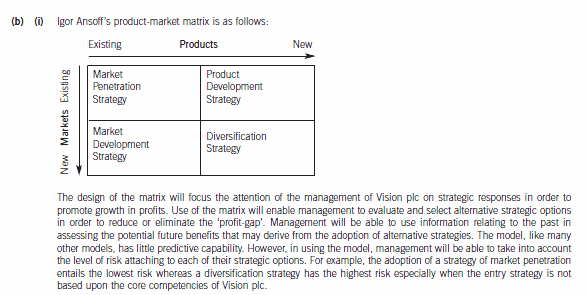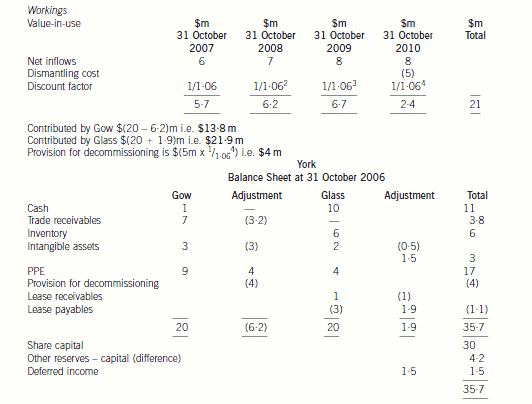2021年广西ACCA考试准考证打印时间:考前两周
发布时间:2021-01-03
广西的考生们都很关注ACCA考试准考证打印是什么时候开始,接下来51题库考试学习网就带大家一起来看看!
ACCA考试准考证打印时间:在考前两周,可以登陆MYACCA里打印准考证(准考证是学员考试必带的证明,请重视,打印准考证数量须和考试科数相同)。因邮寄的准考证收到时间较晚,建议提前打印好准考证,仔细核对报考科目和考试地点有无错误。
ACCA考试准考证打印步骤如下:
(1)ACCA考试学员需登录www.accaglobal.com。
(2)点击MYACCA后输入学员号和密码进入。
(3)点击左侧栏里EXAM ENTRY&RESULTS进入。
(4)点击EXAM ATTENDANCE DOCKET生成页面打印即可。
ACCA准考证打印注意事项与常见问题:
1、准考证打印需要关注问题
首先提醒考生们在打印准考证时要认真核对个人信息,是否和报名时所用的身份证信息一致,如果出现问题一定要第一时间联系协会。
大家在打印时除了要留意准考证上的姓名、考试地点和照片等信息外,也要看一下各科目的考试时间。
2、打印网址进不去
准考证打印的前几天属于高峰期,大家要尽量的错开高峰期打印,但是也不要拖到最后,避免发生网络错误打印不出准考证的情况出现。
3、准考证不幸丢失怎么办?
建议大家在打印时留好备份,避免丢失造成不必要的麻烦。
4、如果无法下载该怎么办呢?
很可能是由于学员所报考考点的地址信息细节暂时未能确认而导致准考证未开放下载。请耐心等待ACCA确认地址信息细节。如果有考生是属于此情况,ACCA将发送电子邮件告知何时可以下载准考证,请考生注意查收相关邮件!
5、如果考场地点尚未确定,页面会显示?
将看到以下提示信息: “Please note your exam docket is currently unavailable, please try again later.” (请留意,目前您的准考证还未能下载,请稍后再试。)
6、准考证上信息和报考系统不一样
准考证作为正式的考试凭证,为学员确认每个考季的最终考试信息,因此,应以准考证上的考试信息为准,包括考试日期、时间与考点地址。
以上是51题库考试学习网为你带来2021年广西ACCA考试准考证打印时间的参考信息,想了解更多考试信息,请持续关注51题库考试学习网!
下面小编为大家准备了 ACCA考试 的相关考题,供大家学习参考。
(b) (i) Explain how the use of Ansoff’s product-market matrix might assist the management of Vision plc to
reduce the profit-gap that is forecast to exist at 30 November 2009. (3 marks)

(c) non-consolidated entities under common control. (4 marks)
(c) Non-consolidated entities under common control
■ Horizontal groups of entities under common control were a significant feature of the Enron and Parmalat business
empires.
■ Such business empires increase audit risk as fraud is often disguised through labyrinthine group structures. Hence
auditors need to understand and confirm the economic purpose of entities within business empires (as well as special
purpose entities (SPEs) and non-trading entities).
■ Horizontal groups fall outside the requirement for the preparation of group accounts. It is not only finance that is offbalance
sheet when controlled entities are excluded from consolidated financial statements.
■ In the absence of consolidated financial statements, users of accounts of entities in horizontal groups have to rely on the
disclosure of related party transactions and control relationships for information about transactions and arrangements
with other group entities. Difficulties faced by auditors include:
? failing to detect related party transactions and control relationships;
? not understanding the substance of transactions with entities under common control;
? excessively creative tax planning;
? the implications of transfer pricing (e.g. failure to recognise profits unrealised at the business empire level);
? a lack of access to relevant confidential information held by others;
? relying on representations made in good faith by those whom the auditors believe manage the company when
control rests elsewhere.
■ Audit work is inevitably increased if an auditor is put upon inquiry to investigate dubious transactions and arrangements.
However, the complexity of business empires across multiple jurisdictions with different auditors may deter auditors from
liaising with other auditors (especially where legal or professional confidentiality considerations prevent this).
(b) Prepare the balance sheet of York at 31 October 2006, using International Financial Reporting Standards,
discussing the nature of the accounting treatments selected, the adjustments made and the values placed
on the items in the balance sheet. (20 marks)

Gow’s net assets
IAS36 ‘Impairment of Assets’, sets out the events that might indicate that an asset is impaired. These circumstances include
external events such as the decline in the market value of an asset and internal events such as a reduction in the cash flows
to be generated from an asset or cash generating unit. The loss of the only customer of a cash generating unit (power station)
would be an indication of the possible impairment of the cash generating unit. Therefore, the power station will have to be
impairment tested.
The recoverable amount will have to be determined and compared to the value given to the asset on the setting up of the
joint venture. The recoverable amount is the higher of the cash generating unit’s fair value less costs to sell, and its value-inuse.
The fair value less costs to sell will be $15 million which is the offer for the purchase of the power station ($16 million)
less the costs to sell ($1 million). The value-in-use is the discounted value of the future cash flows expected to arise from the
cash generating unit. The future dismantling costs should be provided for as it has been agreed with the government that it
will be dismantled. The cost should be included in the future cash flows for the purpose of calculating value-in-use and
provided for in the financial statements and the cost added to the property, plant and equipment ($4 million ($5m/1·064)).
The value-in-use based on a discount rate of 6 per cent is $21 million (working). Therefore, the recoverable amount is
$21 million which is higher than the carrying value of the cash generating unit ($20 million) and, therefore, the value of the
cash generating unit is not impaired when compared to the present carrying value of $20 million (value before impairment
test).
Additionally IAS39, ‘Financial Instruments: recognition and measurement’, says that an entity must assess at each balance
sheet date whether a financial asset is impaired. In this case the receivable of $7 million is likely to be impaired as Race is
going into administration. The present value of the estimated future cash flows will be calculated. Normally cash receipts from
trade receivables will not be discounted but because the amounts are not likely to be received for a year then the anticipated
cash payment is 80% of ($5 million × 1/1·06), i.e. $3·8 million. Thus a provision for the impairment of the trade receivables
of $3·2 million should be made. The intangible asset of $3 million would be valueless as the contract has been terminated.
Glass’s Net Assets
The leased property continues to be accounted for as property, plant and equipment and the carrying amount will not be
adjusted. However, the remaining useful life of the property will be revised to reflect the shorter term. Thus the property will
be depreciated at $2 million per annum over the next two years. The change to the depreciation period is applied prospectively
not retrospectively. The lease liability must be assessed under IAS39 in order to determine whether it constitutes a
de-recognition of a financial liability. As the change is a modification of the lease and not an extinguishment, the lease liability
would not be derecognised. The lease liability will be adjusted for the one off payment of $1 million and re-measured to the
present value of the revised future cash flows. That is $0·6 million/1·07 + $0·6 million/(1·07 × 1·07) i.e. $1·1 million. The
adjustment to the lease liability would normally be recognised in profit or loss but in this case it will affect the net capital
contributed by Glass.
The termination cost of the contract cannot be treated as an intangible asset. It is similar to redundancy costs paid to terminate
a contract of employment. It represents compensation for the loss of future income for the agency. Therefore it must be
removed from the balance sheet of York. The recognition criteria for an intangible asset require that there should be probable
future economic benefits flowing to York and the cost can be measured reliably. The latter criterion is met but the first criterion
is not. The cost of gaining future customers is not linked to this compensation.
IAS18 ‘Revenue’ contains a concept of a ‘multiple element’ arrangement. This is a contract which contains two or more
elements which are in substance separate and are separately identifiable. In other words, the two elements can operate
independently from each other. In this case, the contract with the overseas company has two distinct elements. There is a
contract not to supply gas to any other customer in the country and there is a contract to sell gas at fair value to the overseas
company. The contract has not been fulfilled as yet and therefore the payment of $1·5 million should not be taken to profit
or loss in its entirety at the first opportunity. The non supply of gas to customers in that country occurs over the four year
period of the contract and therefore the payment should be recognised over that period. Therefore the amount should be
shown as deferred income and not as a deduction from intangible assets. The revenue on the sale of gas will be recognised
as normal according to IAS18.
There may be an issue over the value of the net assets being contributed. The net assets contributed by Glass amount to
$21·9 million whereas those contributed by Gow only total $13·8 million after taking into account any adjustments required
by IFRS. The joint venturers have equal shareholding in York but no formal written agreements, thus problems may arise ifGlass feels that the contributions to the joint venture are unequal.

(d) Discuss the professional accountant’s liability for reporting on prospective financial information and the
measures that the professional accountant might take to reduce that liability. (6 marks)
(d) Professional accountant’s liability
Liability for reporting on PFI
Independent accountants may be required to report on PFI for many reasons (e.g. to help secure a bank loan). Such forecasts
and projections are inherently unreliable. If the forecast or projection does not materialise, and the client or lenders (or
investors) consequently sustain financial loss, the accountant may face lawsuits claiming financial loss.
Courts in different jurisdictions use various criteria to define the group of persons to whom independent accountants may be
held liable for providing a report on an inaccurate forecast or projection. The most common of these are that an accountant
is liable to persons with whom there is proximity:
(i) only (i.e. the client who engaged the independent accountant);
(ii) or whose relationship with the accountant sufficiently approaches privity;
(iii) and to persons or members of a limited group of persons for whose benefit and guidance the accountant supplied the
information or knew that the recipient of the information intended to supply it;
(iv) and to persons who reasonably can be foreseen to rely on the information.
Measures to reduce liability
As significant assumptions will be essential to a reader’s understanding of a financial forecast, the independent accountant
should ensure that they are adequately disclosed and clearly stated to be the management’s responsibility. Hypothetical
assumptions should be clearly distinguished from best estimates.
The introduction to any forecast (and/or report thereon) should include a caveat that the prospective results may not be
attained. Specific and extensive warnings (‘the actual results … will vary’) and disclaimers (‘we do not express an opinion’)
may be effective in protecting an independent accountant sued for inaccuracies in forecasts or projections that they have
reported on.
Any report to a third party should state:
■ for whom it is prepared, who is entitled to rely on it (if anyone) and for what purpose;
■ that the engagement was undertaken in accordance with the engagement terms;
■ the work performed and the findings.
An independent accountant’s report should avoid inappropriate and open-ended wording, for example, ‘we certify …’ and ‘we
obtained all the explanations we considered necessary’.
Engagement terms to report on PFI should include an appropriate liability cap that is reasonable given the specific
circumstances of the engagement.
The independent accountant may be able to obtain indemnity from a client in respect of claims from third parties. Such ‘hold
harmless’ clauses obligate the client to indemnify the independent accountant from third party claims.
声明:本文内容由互联网用户自发贡献自行上传,本网站不拥有所有权,未作人工编辑处理,也不承担相关法律责任。如果您发现有涉嫌版权的内容,欢迎发送邮件至:contact@51tk.com 进行举报,并提供相关证据,工作人员会在5个工作日内联系你,一经查实,本站将立刻删除涉嫌侵权内容。
- 2020-01-10
- 2020-08-15
- 2021-01-01
- 2020-01-10
- 2020-01-10
- 2020-01-10
- 2020-08-15
- 2020-08-14
- 2020-01-10
- 2020-12-24
- 2020-01-10
- 2020-01-09
- 2020-01-09
- 2020-01-09
- 2020-08-15
- 2020-01-09
- 2020-09-04
- 2020-09-04
- 2020-09-04
- 2020-01-10
- 2020-01-09
- 2020-01-08
- 2020-01-10
- 2020-08-14
- 2020-12-24
- 2020-01-08
- 2020-01-08
- 2020-01-10
- 2021-01-03
- 2020-09-03